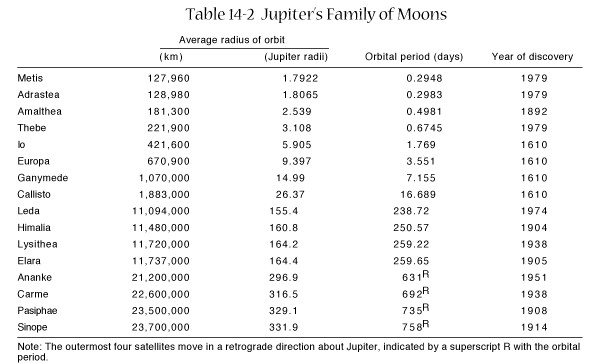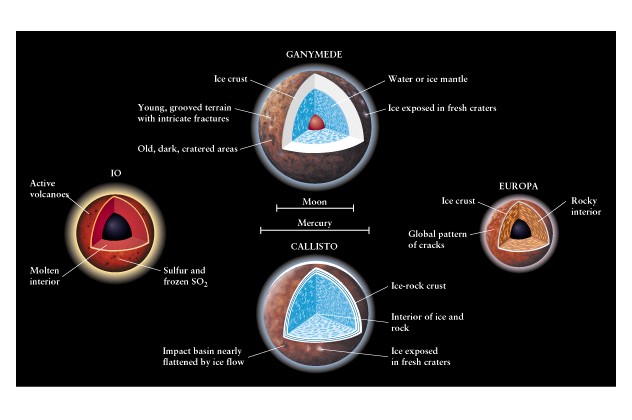Galilean
Satellites
Printable
version
April
13, 2000
Announcements
Galilean
Satellites Preview
-
Io,
Europa, Ganymede, Callisto
-
Seeing
moons from Earth
-
Formation
theories
-
Io
-
Sulfur
volcanos
-
Plasma
torus
-
Europa
-
Ice
[over water?]
-
Active
surface
-
Ganymede
-
Ice
covered, rock core
-
surface
not active
-
Callisto
-
Ice
rock mix
-
surface
not active
-
All
of Jupiter's moons
Jupiter's
Moons from Earth
-
Galileo saw first
-
dots moving back and forth
every ~2--17 days
-
deduced they were orbiting
Jupiter
-
analogy to Solar System
-
Modern telescopes can see
light and dark patches
-
synchronous rotation about
Jupiter
-
verified with spacecraft
-
Ratio of orbital periods:
-
Io:Europa:Ganymede [:Callisto]
-
1:2:4 [:9.434]
-
Tidal forces with Jupiter
and each other are important to Io, Europa, Ganymede
-
As big or bigger than our
our Moon/Mercury
-
Observing slight orbital
deflections (and spacecraft deflections) gives masses
-
Observing occultations (and
spacecraft pictures) gives sizes
-
Average densities (mass/volume)
-
Io, Europa >3000 kg/m3
-
Ganymede, Callisto < 2000
kg/m3
-
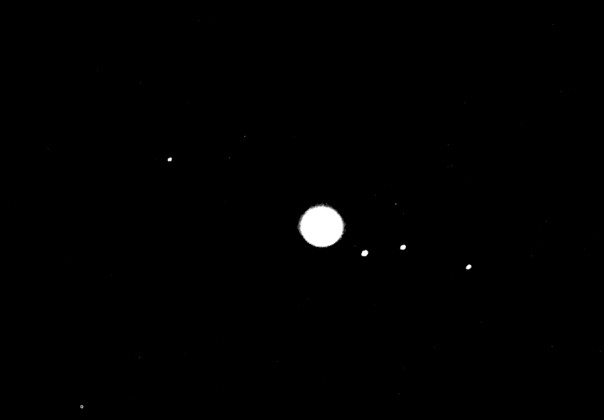
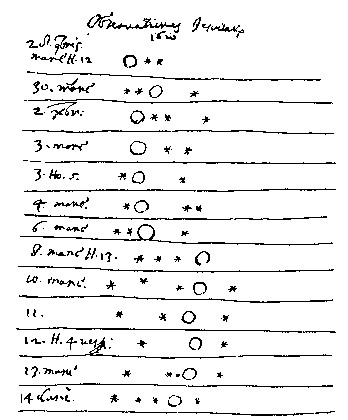

Note Titan orbits Saturn,
Triton orbits Neptune
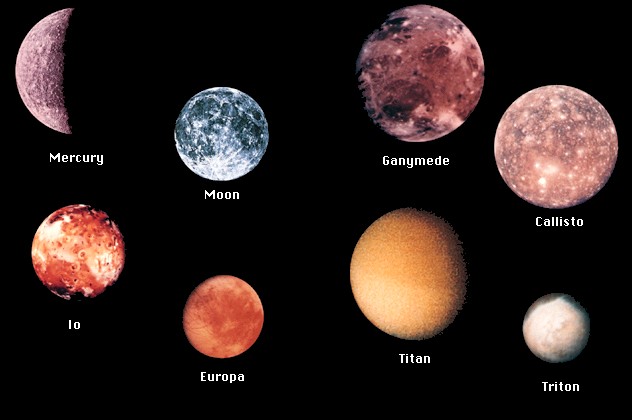
Formation
Theories of Jupiter's Moons
-
Jupiter's moons formed at
the same time as Jupiter
-
Analogous to planets forming
around the Sun
-
large cloud
-
dense concentration in center
-
disk
-
clumps in disk
-
Lots of water ice at Jupiter's
cloud
-
Different densities of moons
suggest Jupiter's internal heat played a role
-
Close moons had water evaporated
away
-
Tidal heating allowed
chemical differentiation
-
Io, Europa (close moons)
-
denser
-
active surfaces (caused by
warm interiors)
-
Ganymede, Callisto
-
less dense, less active
-
Callisto not even differentiated
-
Jupiter even has equivalent
of asteroid belt
-
inner small moons Amalthea,
Adrastea, Metis, ...
-
ring of rock dust (each particle
<1mm)
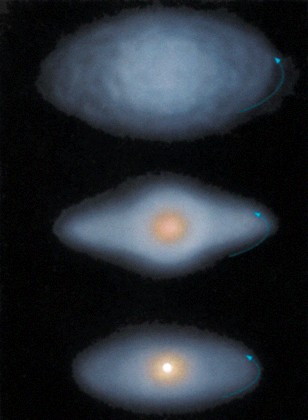
Chemical differentiation
in the Earth
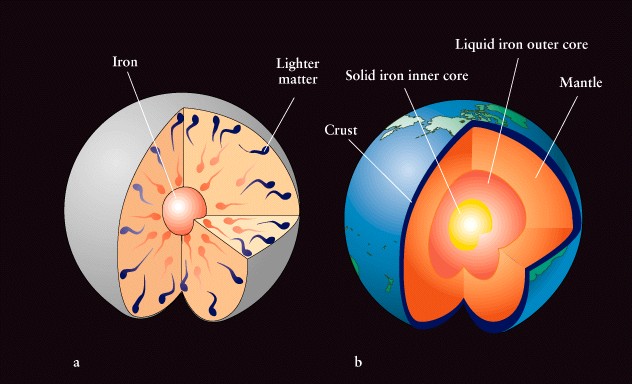
Jupiter's dust ring in
the infrared (also note belts and zones)
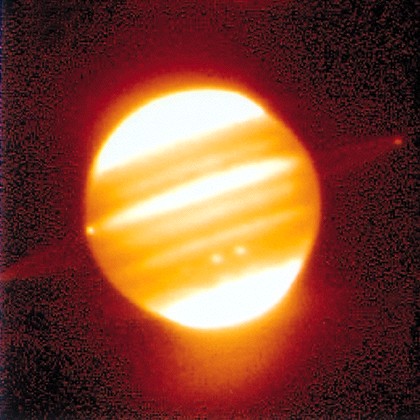
Io
-
Io has active volcanos!
-
Caused by warm interior bubbling
out
-
If Io is as big as our Moon,
why is Io's interior warm and not the Moon's
-
Io has no impact craters.
Why?
-
Io is funny colored
-
Sulfurous compounds
-
"volcanos" are probably SO2
(sulfur dioxide) geysers
-
Material ejected from Io
-
some electrons missing
-
charges effected by magnetic
fields
-
material caught in Jupiter's
magnetic field
-
Io plasma torus
-
material in plasma torus
orbits every ~10 hours
-
Io orbits every ~2 days
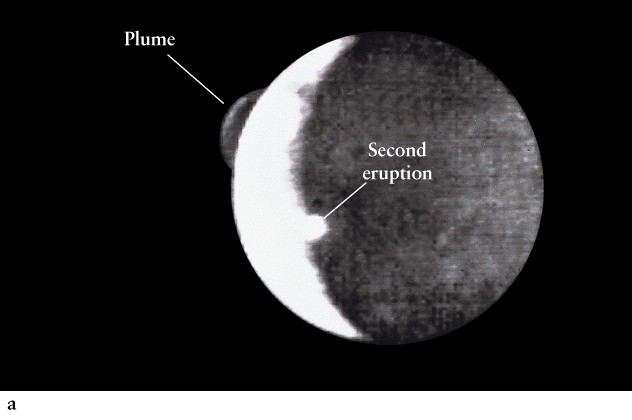
Io hemispheres
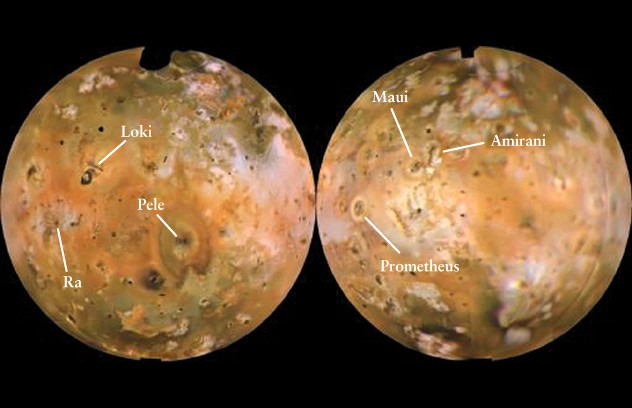
April 1997 vs Sept. 1997
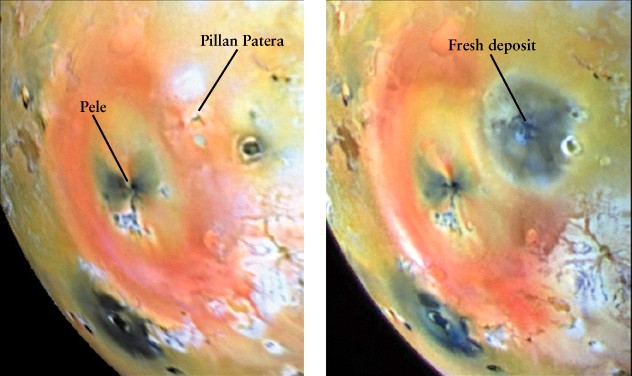
Io plasma torus (one
edge only)
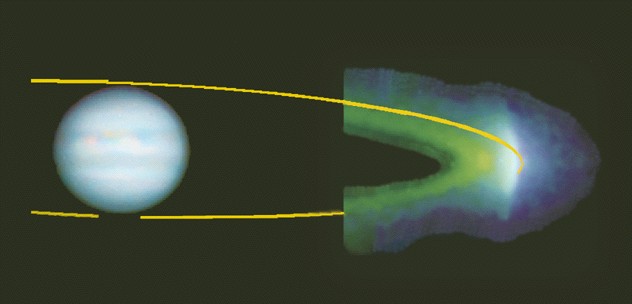
Europa
-
Average density 3020 kg/m3
-
Surface is ice
-
No craters
-
surface constantly renewing
-
Mostly covered with ridges
and groves
-
Evidence of sub-surface liquid
water or soft ice
-
broken, re-floated regions
-
Triple bands possibly stretched
out geyser
-
dark material on either side
might be erupted
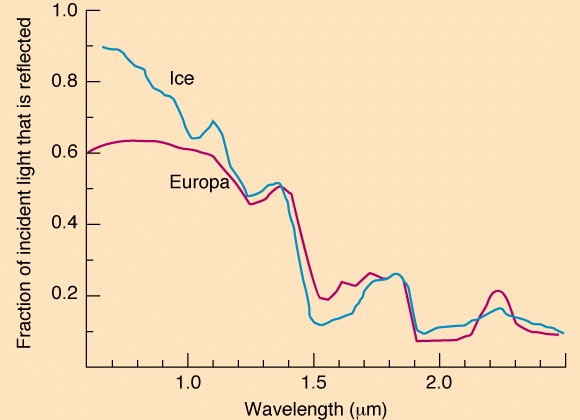
Europa
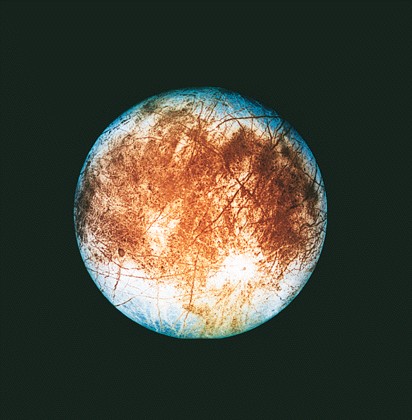
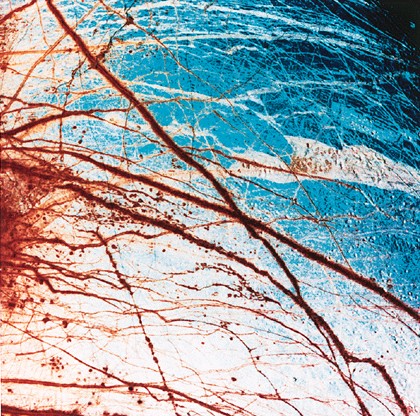
Ridges and groves
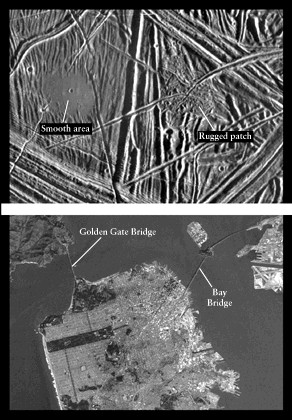
Rafts
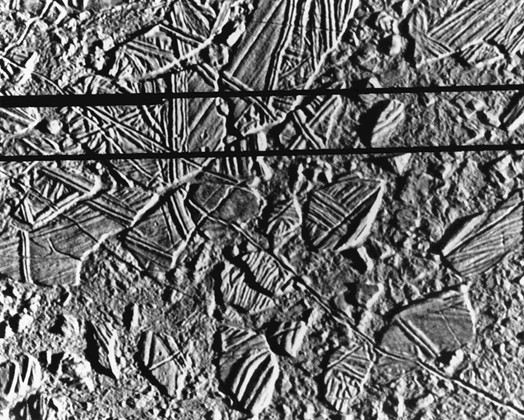
Triple bands
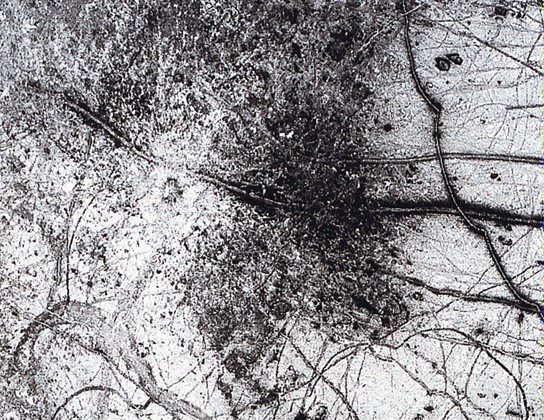
Ganymede
-
Ganymede has craters
-
Bright and dark terrain
-
opposite of moon
-
dark older
-
bright newer
-
Bright terrain has groves
similar to Europa, but no rafts
-
Ganymede has a magnetic field!
-
indicates warm liquid metal
interior
-
heat not from current tidal
forces
-
may have previously had a
eccentric orbit
-
tidally heated at perijove
-
orbit circularized by other
moons
-
still warm inside
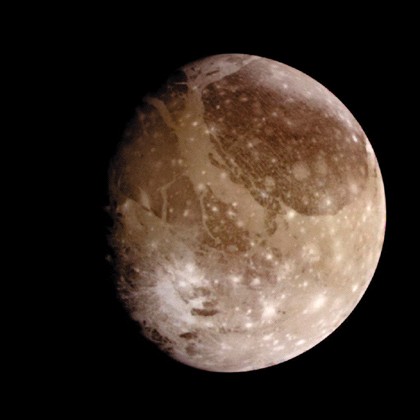
Dark terrain
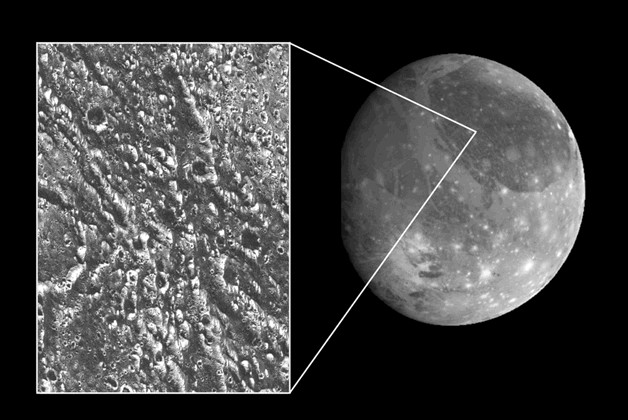
Bright terrain
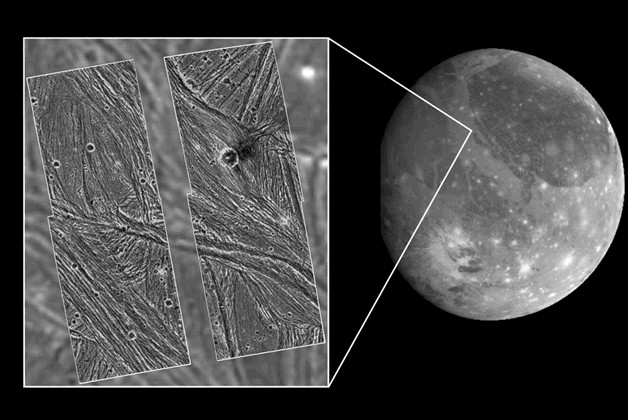
Callisto
-
Callisto has craters
-
surface no longer active
-
Biggest crater named Valhalla
-
Callisto has no groves or
any sign of geologic activity
-
other than slumping of Valhalla's
rings
-
Valhalla crater probably
4 billion years old
-
No magnetic field
-
Not differentiated
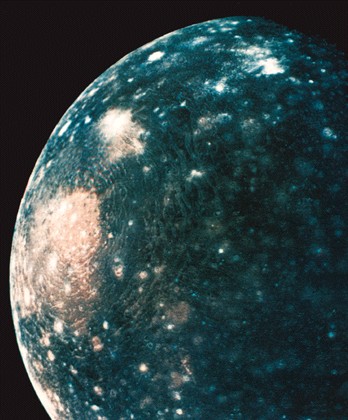
All
of Jupiter's Moons
-
16
moons discovered so far
-
Smallest
is Leda (16 km)
-
Outer
4 orbit backwards (retrograde)
